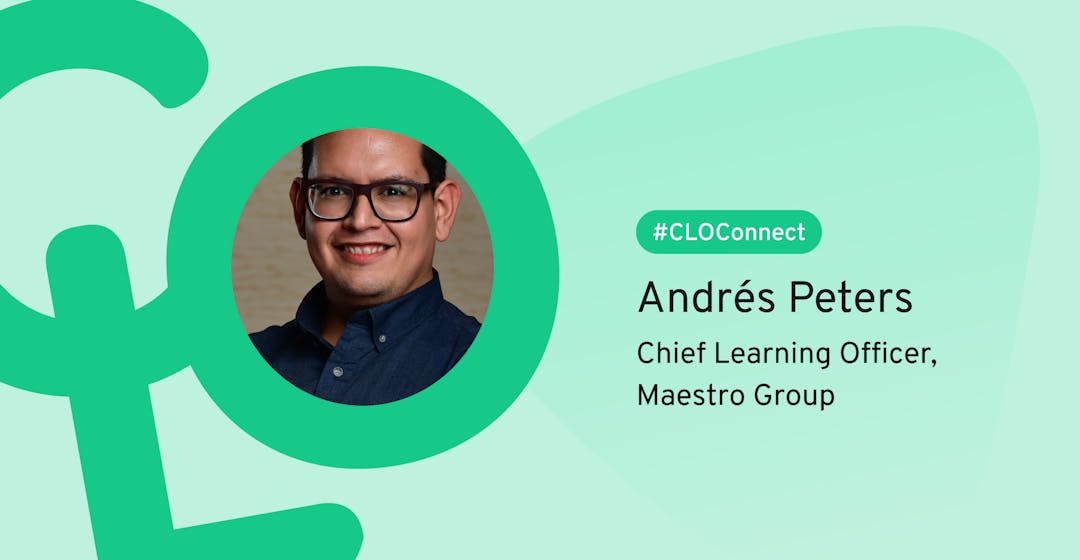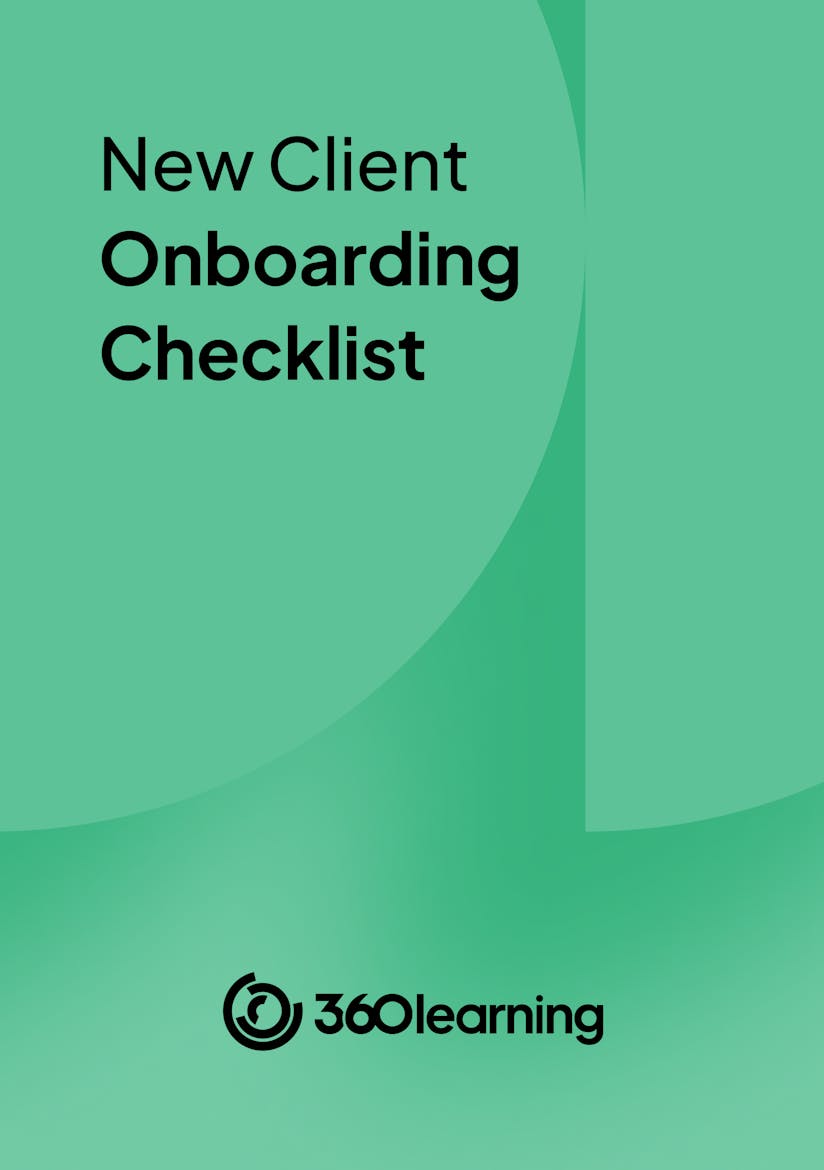
Standing Out From the Crowd: Maestro Group’s 4-Phased Approach to Formalized Learning Design
Developing training is hard enough, but creating courses that enable trainers to be effective while also driving better learner outcomes can be a next-level challenge.
So, is there an approach that can help you create courses and be agile simultaneously? And how can you design every course to have consistency in look, feel, and voice?
In this interview, I speak to Andrés Peters, Chief Learning Officer (Head of Enablement, Leadership, and Learning) at Maestro Group, about his four-phased approach to formalized course design and how his team is standing out from the crowd.
Read on to hear how Andrés and his team engages with past clients to ensure their content hasn’t lost the magic that makes them stand out, why grounding intervention design in science adds complexity and richness, and the impact of learner testimonials.
Loving what you’re reading? Come and join the L&D Collective for more great learning insights, resources, and events!
Industrial and organizational psychology: L&D at Maestro Group
At Maestro Group, Andrés’ goal is to help people do their jobs with pride.
“I do that through coaching, training,” he explains, “and advising clients on the performance and productivity we’re seeing across markets.”
Maestro Group is a sales accelerator based in the Washington, D.C. area that works with organizations looking to grow a new sales team or scale their current sales team.
Using the latest industrial and organizational psychology and behavioral science, Maestro Group helps organizations understand how people make decisions and how to enable salespeople to help their prospects make buying decisions faster.
“So, that notion is infused into a lot of the work and the research that I do when it comes to our internal and client training,” says Andrés.
Looking for more tips on building stellar client relationships? Download our free client onboarding checklist to ensure you never miss a key step again.

5 simple steps to stronger client relationships
By providing your contact info, you agree to receive communications from 360Learning. You can opt-out at any time. For details, refer to our Privacy Policy.
The challenge: growing a training team
The biggest challenge Andrés and his team is facing is growing their training and market professionals teams.
“The challenge is making sure that every client that works or engages with us is getting a consistent experience and that the learning objectives tie to their business’ goals,” he explains.
Andrés is working to formalize the learning curriculum and certify their trainers to ensure they deliver the material consistently across different organizations.
“And that takes a lot of work because it's formalizing many processes, helping people understand how they can bring their authentic selves and tell their stories while staying true to the intent and the spirit of the curriculum,” Andrés explains.
“Because at the end of the day, we want learners to be the center of the experience, wow them with stories from experienced sellers, and help them build skills they're able to take back and implement in their day-to-day.”
And before they roll out the final course to any client, Andrés and the team will engage with past clients and ask if they are willing to test the new course and provide feedback.
“We're not just receiving feedback from internal stakeholders, but also from people who have had our training in the past and have been impacted by it. We do this to ensure we've retained the magic,” he says. “That we haven't lost the energy, the background, and the stories that we bring when we deliver a new or a more formalized course.”
So, how is the learning team structured around the challenge of growing trainers?

Related: AppZen’s TouchPoints Framework for Increasing Customer Centricity in Every Team
Learning beyond training: self-paced nano modules
Andrés and the team have taken their core courses and created them into nano modules.
"The goal is to help our clients go beyond the training,” he says. “Let's say you remember something about our Effective Emails course; we have a video on that as part of our self-paced course. All our clients have access, but that involves bringing in a whole other set of skills from a learning perspective.”
To make these nano module videos, Andrés and the team engage with script writers to write the scripts, instructional designers to map out the post-session activities, and assessment writers to create quizzes aligned explicitly to the videos.
“So, it's a very different set of skills, but I think it's a skill set that takes our eLearning to the next level and makes it much more impactful for our clients,” he says.
In growing the training team, Andrés and the team had to evolve their design process.
Related: How GTreasury Creates Impactful Learning Experiences Using Subject-Matter Expertise
Maestro Group’s 4-phased approach to formalized learning design
As Andrés explains, their design process has evolved since it was one person designing and shipping the content. Now, it’s more formalized and structured.
Today, they are a team of five to six people with a process that flows from drafting an initial outline to finalization.
1. Draft your outline
Firstly, Andrés and the team draft the outline of each course.
“We draft out the learning objectives and what the business objectives are so that when we're talking internally or externally, we’re helping them better understand the potential ROI from taking this course,” he says.
2. Storyboard and review
With the outline drafted, one of the instructional designers will storyboard the course via PowerPoint and add the initial speaker or facilitator guide notes.
Once this is complete, Andrés will review the final piece to ensure it meets their muster test as it relates to the rest of their curriculum.
3. Review speaker notes for authenticity
Next, Andrés and the team ship the course to a copy editor to review the slides and speaker notes for voice, grammar, spelling, and readability.
“We do this because trainers are going to be speaking the content out loud, and if we're using words that are hard to pronounce, it’s not going to come across as authentic,” he says.
4. Formalize the final training course
Finally, the course is formalized into a speaker facilitator guide and a PowerPoint presentation, and the team goes through the certification process with trainers.
“Trainers opt into the courses they want to teach,” explains Andrés. “So, we survey all of our trainers asking if they would be interested in delivering a course like this. If they say yes, we undergo a certification process with them.”
“We found that it allows us to be much more agile when it comes to our design process because we can look at multiple different courses at the same time and not bog down one person in an end-to-end process.”
Andrés and the team find that showing trainers what is expected of them within the material has been effective, as well as ensuring all of their courses have a similar look, feel, and voice.
Related: How Miro Drives Customer Education with Digital Credentialing
Learner testimonials: what didn’t you expect to learn?
Every course that Andrés and the team delivers gets evaluated to measure learning, the utility of the training, and if people would recommend others take the training.
“We also added in additional questions that I think most learning organizations don't tend to ask, but we feel are really impactful to us,” he explains. “We ask the question: ‘Going into this training, what's one thing you learned you weren't expecting to learn? And what's one thing you were expecting to learn that you didn't learn?’”
“It has been eye-opening to receive this feedback from learners: the answers are so varied. We use this information to tweak course descriptions, so people better understand what the takeaways will be, or if we get enough of ‘I was expecting to learn this, but I didn't’, we know it's time to refresh the course,” says Andrés.
Andrés has often been surprised by the answers to these two questions, especially what people learned that they weren’t expecting to learn. “That's a core piece of our course,” he says. “It tells us how our sales training is differentiated from others because when we go into an organization, their people have taken various sales methodology training.”
It has been eye-opening to receive this feedback from learners: the answers are so varied. We use this information to tweak course descriptions, so people better understand what the takeaways will be, or if we get enough of ‘I was expecting to learn this, but I didn't’, we know it's time to refresh the course.
“We get to understand the training out there and what people are learning. So when we get a testimonial of someone who learns something they weren't expecting to learn, it's interesting because now we know we're looking at this differently than the others. So, it's not a variation of a theme. Instead, we're carving out our own path.”
Related: 9 Tips to Create a Truly Effective Peer Feedback Loop
Falling in love with industrial and organizational psychology
Speaking of learning something you weren’t expecting to learn, Andrés did not realize how much he would fall in love with industrial and organizational psychology.
“The redesign process has created a new passion area for me and started my second career arc,” he explains. “I'm getting my Masters in IO Psychology, and it's really because I knew that the things that I did were effective when it came to working with others, but I didn't know why.
As Andrés started researching and understanding how they work in sales, he realized much of it concerned social psychology and how organizations work.
“Going deeper into IO Psychology and feeling like I'm more grounded in the actual science adds another layer of complexity to our training and my conversations with people,” he explains. “That's been really fulfilling over the last two years I've been with this organization.”
Thanks to Andrés for sharing his insights and experience with us!
For more expert advice and insights to help boost your L&D practice, check out how Christina Seow connects isolated roles with her inter-organizational peer mentoring program at Gorgias or how Hillary Miller at Penn State Health applies empathy-guided L&D when designing learning initiatives that meet learners at their point of need.
Want more peer insights on transforming workplace learning? Sign up to become a member of the L&D Collective, and check out our other #CLOConnect interviews with top L&D leaders on driving growth and scaling culture through Collaborative Learning. Or you can subscribe (below 👇) to our weekly newsletter to receive our latest posts directly in your inbox.


